Table of Contents
Brompton is a folding bike company that builds around 80,000 bikes per year out of their factory in London.
These are some of the smallest folding bikes available, and their ingenious design allows them to fold down in just a handful of seconds. The bikes are somewhat light, very durable and quite comfortable to ride – plus, you can push them around very easily in their folded state. They are a great bike to combine with public transport, store in an apartment, hide under your desk, or take with you overseas.
But these folding bikes are far from perfect, and there is a large aftermarket industry that aims to make your Brompton better.
For example, you’ve been able to find the components required to build ludicrously lightweight custom Bromptons for many years. I’m talking folding bikes absolutely dripping with carbon and titanium and weighing under 5kg/11lb.
Just this year, Brompton released their own lightweight titanium model – a 7.45kg/16.4lb bike that might not have come about if the aftermarket industry hadn’t paved the way first.
In this article, I’ll be explaining some of the aftermarket features available for Bromptons – including bigger wheels, wider tyres, gearboxes, belt drivetrains and disc brakes. These popular upgrades might just give us a glimpse into the future of Brompton bikes.
Aftermarket Wheel Diameters
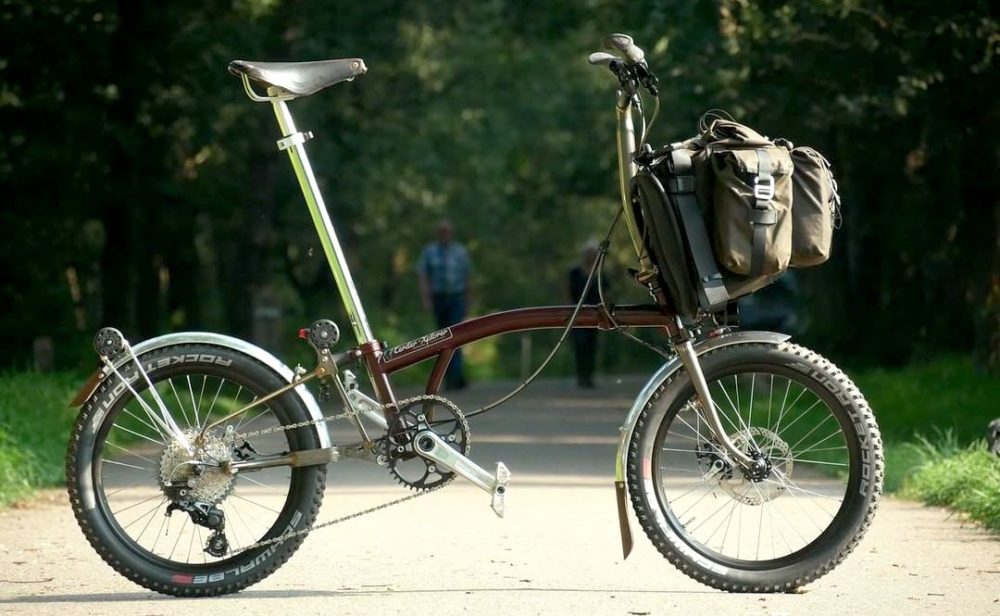
Let’s start with the wheel diameter.
Brompton bikes use 16″ wheels with 35mm (1.35″) wide tyres. This wheel size is key for providing the famous small fold, but it also compromises the performance of the bike in some situations.
Studies conducted by Schwalbe tyres have shown that rolling resistance losses are inversely proportional to the tyre radius (approximately). This means that larger diameter wheels have a lower rolling resistance than smaller diameter wheels (using the same tyres).
Some quick maths suggests that switching from 16″ wheels to 20″ wheels could increase a rider’s speed by one kilometre per hour – lopping about three minutes off an hour-long ride.

In addition, larger diameter wheels have a smaller ‘angle of attack’ over bumps and depressions in the road surface, allowing a rider to maintain higher speeds if the surface is less than ideal.
Brompton tyres are often just 35mm/1.35″ wide, which is a touch wider than you’ll find on modern road bikes. These tyres are great on smooth surfaces, but on less than ideal surfaces, higher volume tyres can float over bumps much better – with only a minor increase to the rolling resistance.
Ultimately, folding bikes trade between folded size and performance. Based on the aftermarket options available, it seems lots of people are seeking a more versatile Brompton.
Let’s take a look at the aftermarket wheel options.

There are two common wheel diameter upgrades for Bromptons – 18″ (355) and 20″ (406).
In order to complete a wheel and tyre upgrade, you’ll also need a new fork and rear triangle to match. Kinetics in Scotland manufactures steel forks and stainless steel rear triangles that will suit 18″ x 2.0″ tyres or 20″ x 1.3″ tyres.
The number one reason to use 18″ wheels is to fit tyres with significantly more air volume. 2.0″ wide tyres deform more over cobblestones and dirt paths, which improves both your comfort and speed on these surfaces. This wheel upgrade is likely the perfect balance between folded size and mixed surface bike capability. There are some great 18″ tyre options too, as Birdy folding bikes are built around this spec.
If you want to achieve the highest average speeds on the road, the 20″ option is about as fast as it gets for a small folding bike. You can even get Schwalbe’s top-of-the-line road bike tyres in the 20″ size, which literally halve the rolling resistance of a typical Brompton tyre.
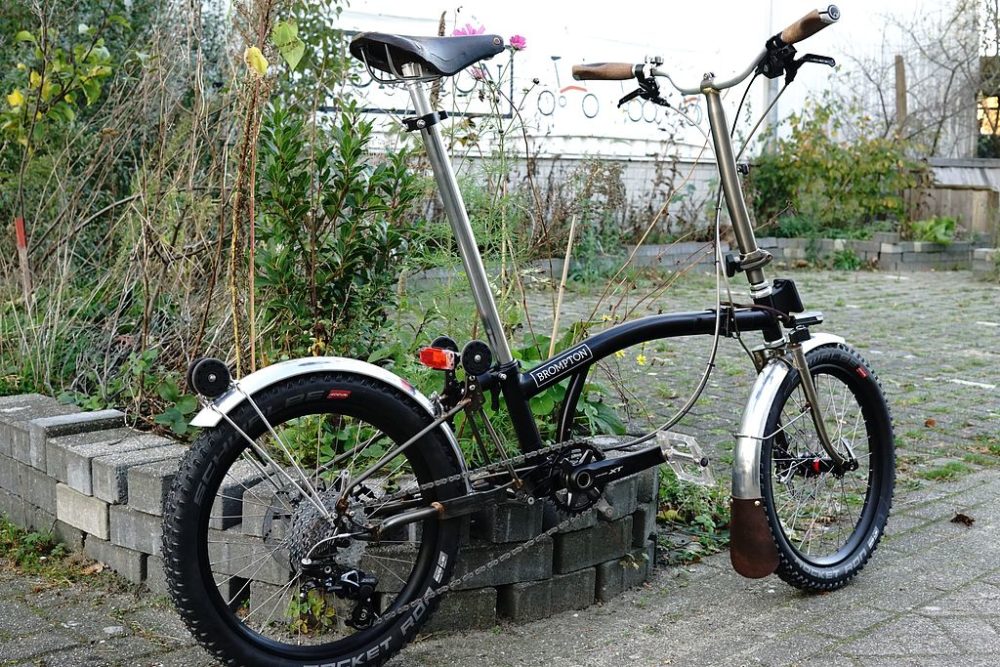
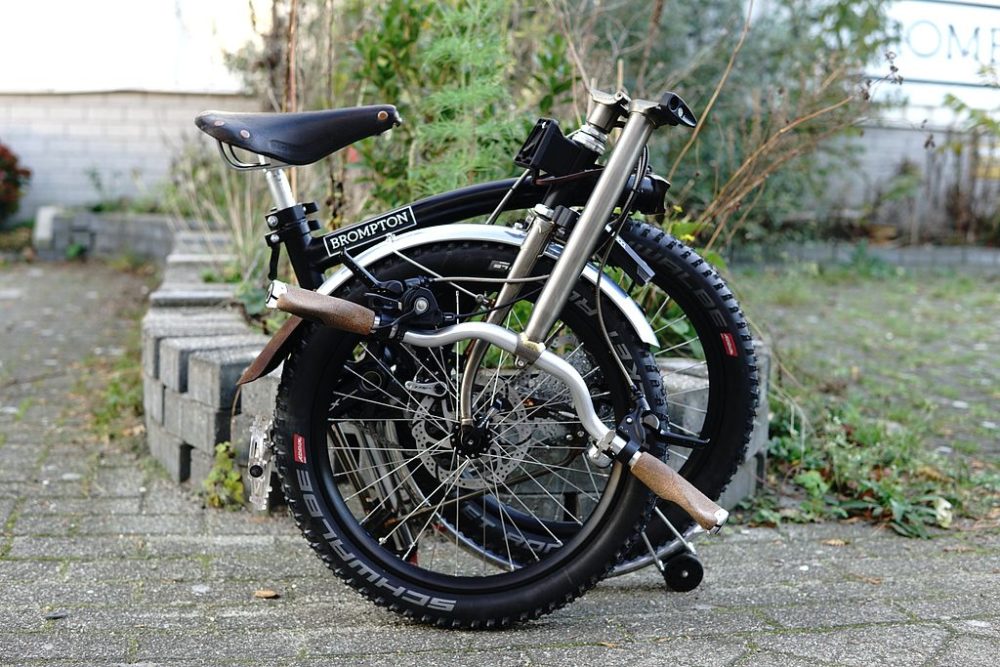
On the opposite end of the spectrum, Vincent at Eerder Metaal in the Netherlands goes a step further and offers custom Brompton builds with 20″ wheels in a 2.6″ width. To make these large wheels work, Vincent uses a custom fork and rear triangle, and he even shaves down the headtube of the frame.
The Xplorer is the ultimate dirt road Brompton – Vincent has tested his bike on lots of mountain bike trails and has found that it’s surprisingly capable. He has built up Xplorers with both derailleur gears and internal gear hubs.
The folded size is 14cm longer, 4.5cm taller and 8cm wider than a regular Brompton, which is still a very manageable size for an apartment or public transport use.
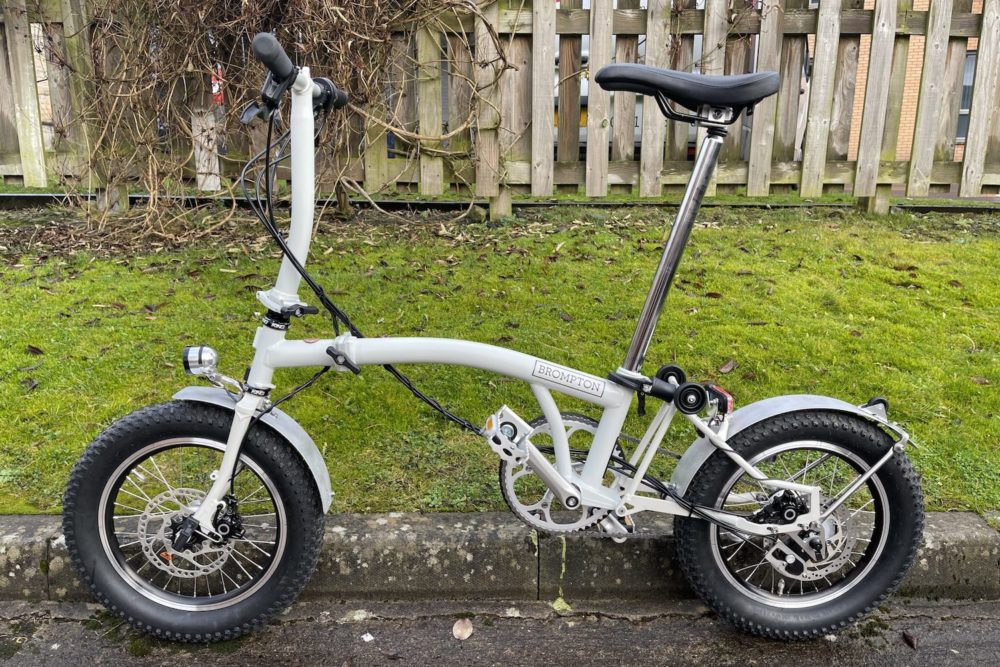
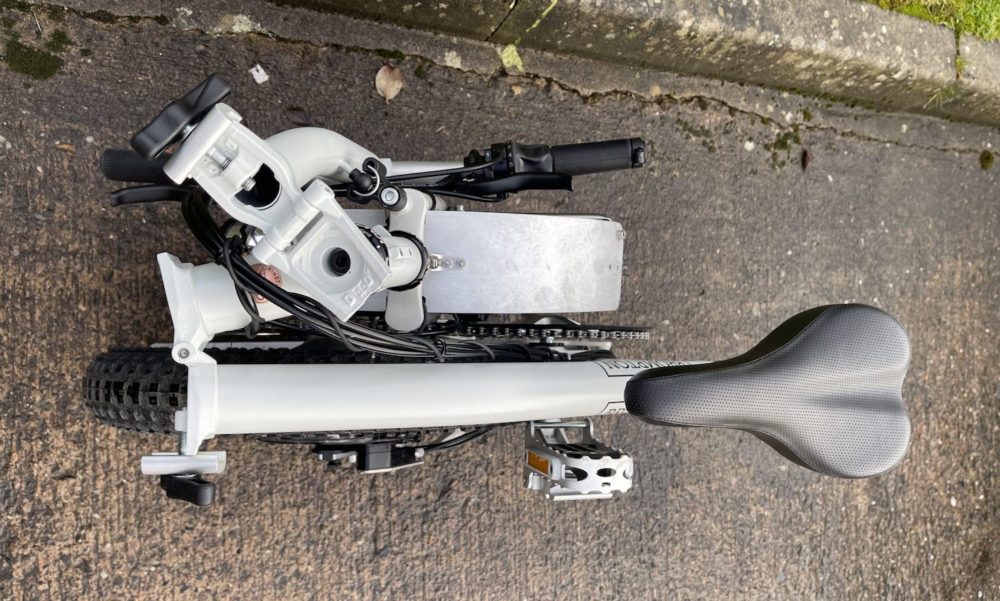
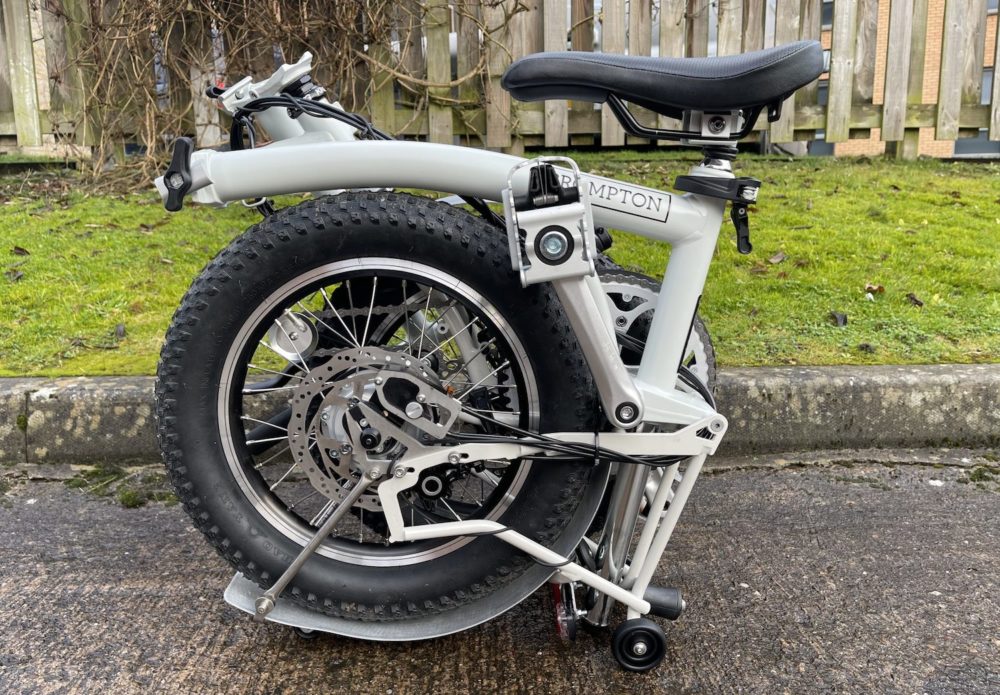
Another interesting aftermarket wheel dimension is 16″ x 3.0″.
This is actually a smaller rim diameter than what is found on stock Bromptons but it allows for the super wide tyres to fold into a very small package. The advantage of this width is that you can run especially low tyre pressures to float over sand, mud or cobblestones.
Brompton Gearbox Drivetrains
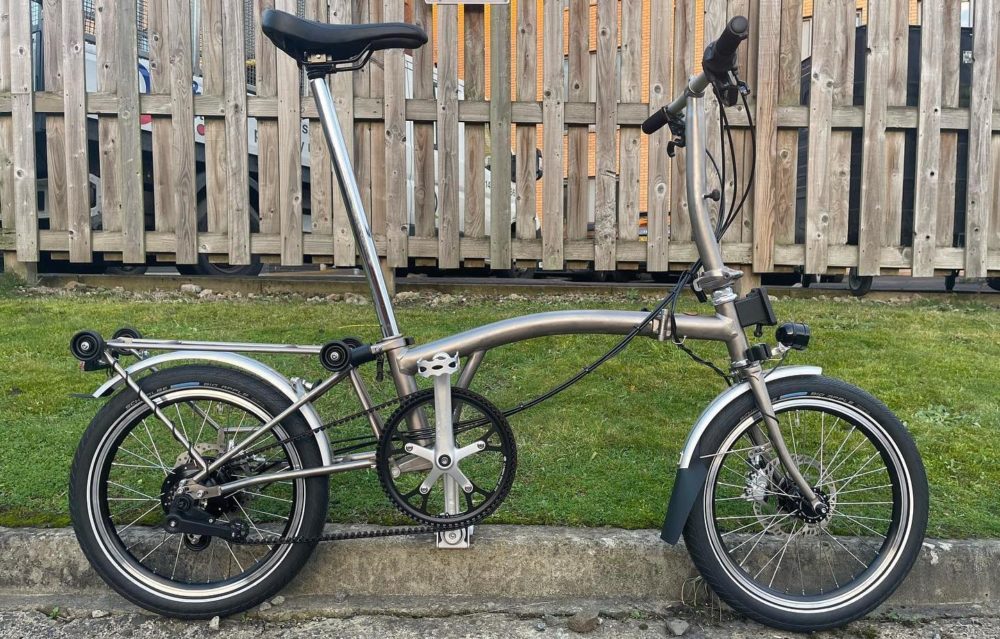
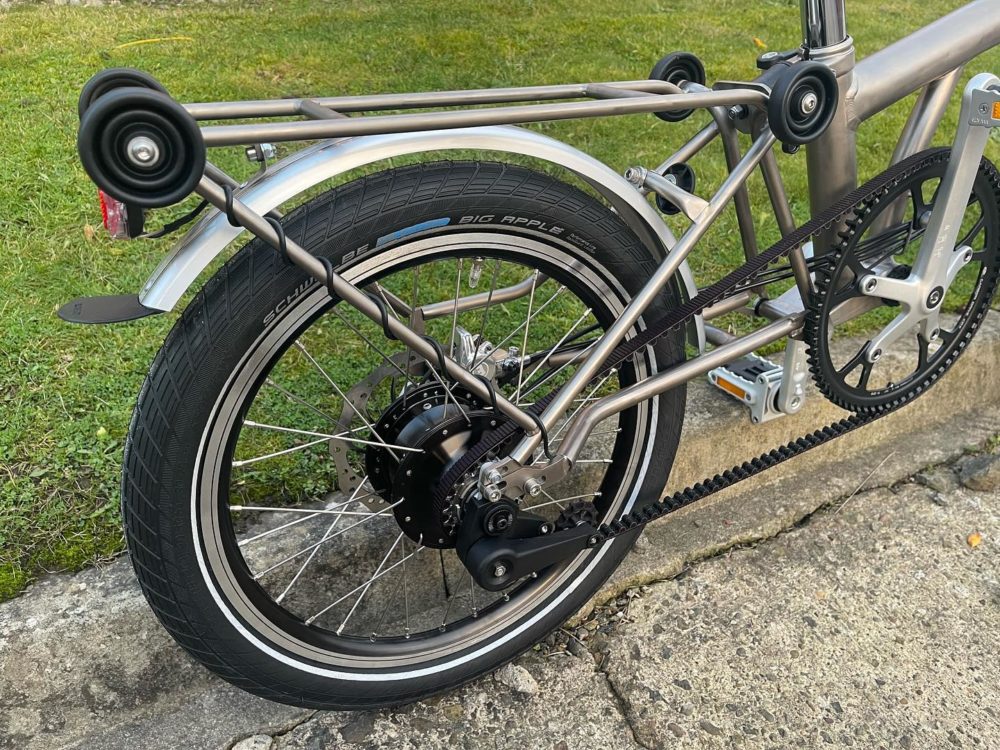
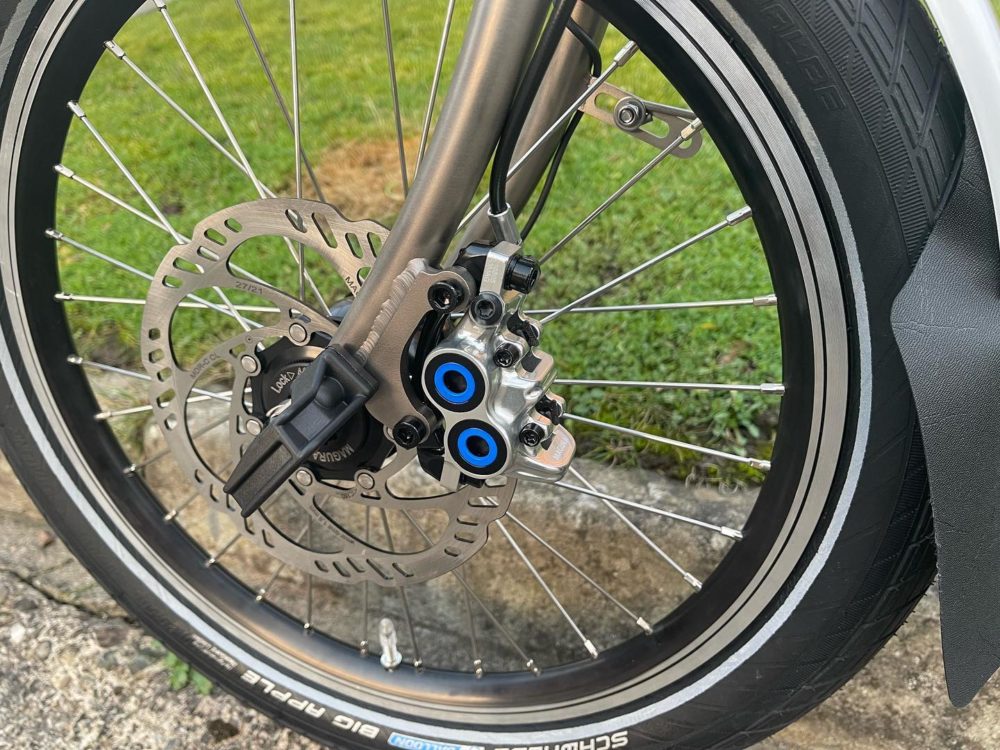
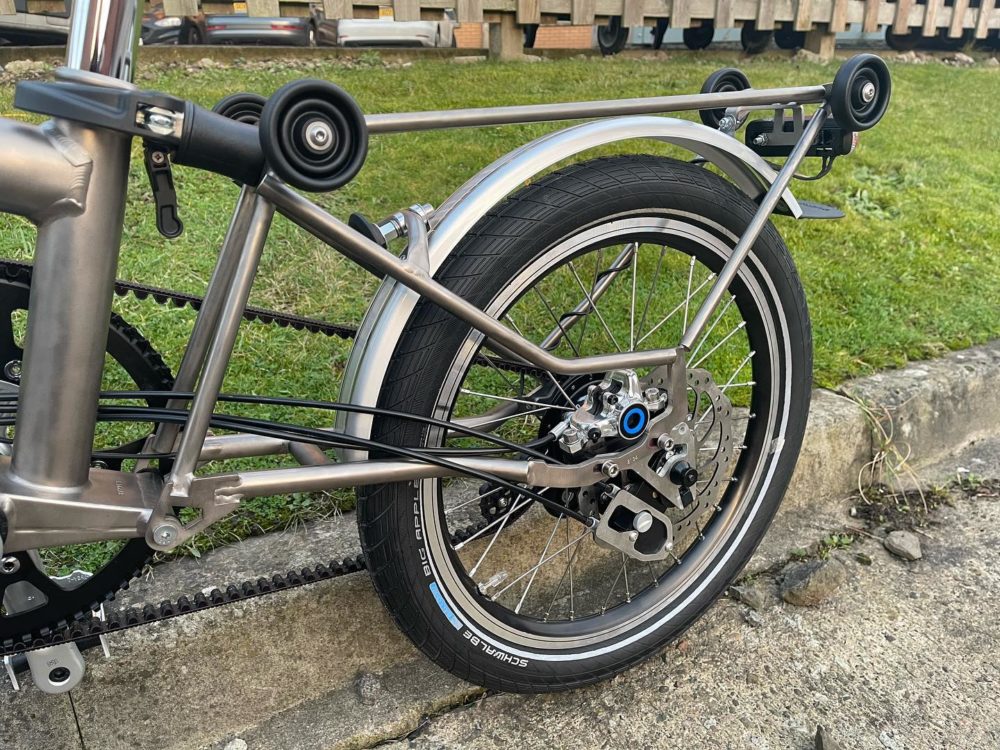
Brompton bikes have a few different drivetrain options. You can use opt for no gears (singlespeed), two or four-speed derailleur gears, a three-speed internal gear hub, or a combination between a derailleur and the three-speed hub providing six gears.
The gear range that Brompton offers on these drivetrains is between 133% and 302%. This simply means that the biggest gear ratio is 1.33x times bigger than the smallest ratio on the two-speed bike, and it’s 3.02x bigger on the six-speed bike.
With bigger gear ranges, we can pedal our bikes across a broader range of speeds, which is especially handy for hill climbing or pedalling downhill.

In comparison to other bikes, the Brompton gear ranges are quite small. Road bikes typically have more than 400% range and mountain bikes more than 500%.
To increase the capability of a Brompton, the aftermarket is producing custom rear triangles that fit all of the best internal gear hubs. Rohloff and Kindernay are considered top of the crop and offer 14 gears that are spread across a 500%+ range. Alfine 8 and 11-speed hubs are popular too thanks to their lower cost, and I’ve seen a few bikes with Enviolo CVT hubs too.
Faltradritter in Germany even customised a Brompton frame to house a Pinion gearbox! This gearbox has an incredible gear range of 636% and 18 individual gears, which gives this Brompton owner the ability to ride up the steepest hills and still have gears for the strongest tailwinds.
Belt Drive Bromptons

When you add a gearbox drivetrain to a bike, you can also switch to a belt drivetrain.
Belts are a particularly good fit for Bromptons because they’re ultra-long lasting, aren’t greasy and require almost zero maintenance. For these reasons, I would not be surprised if we saw a belt drive Brompton rolling out of the factory soon.
Disc Brake Brompton Bikes
With the aftermarket providing new forks and rear ends to house bigger wheels, gearboxes and belt drive, this gives them the opportunity to add disc brakes too.
Disc brakes aren’t an essential component by any means, although they are nice in wet conditions and are generally very reliable given that grit cannot work its way into the hydraulic lines. But with fatter tyre bikes, the regular Brompton rim brakes do not offer enough clearance for wide tyres, so in most cases, disc brakes are a necessity.
Bromptons For Tall Cyclists
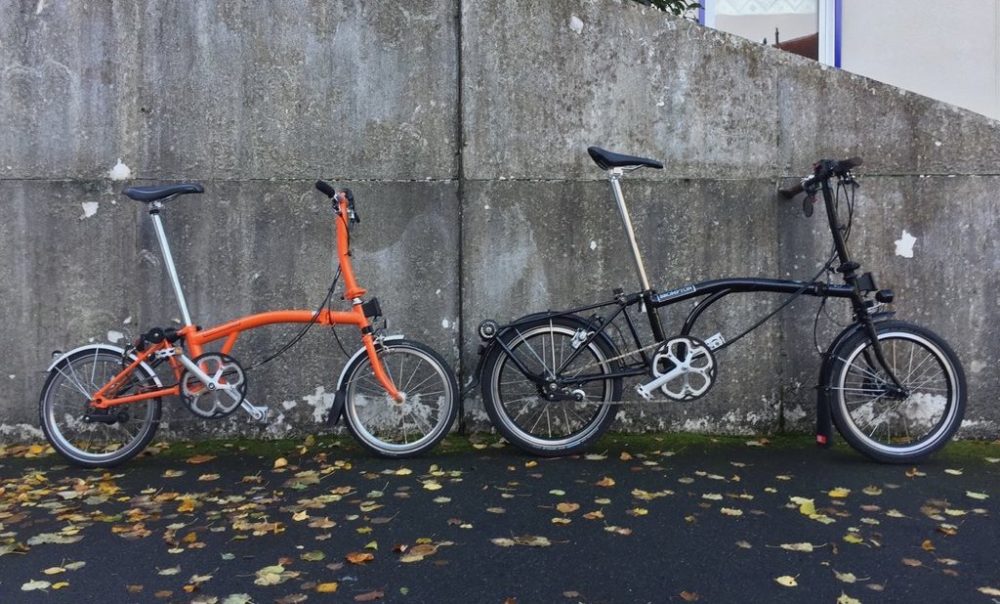
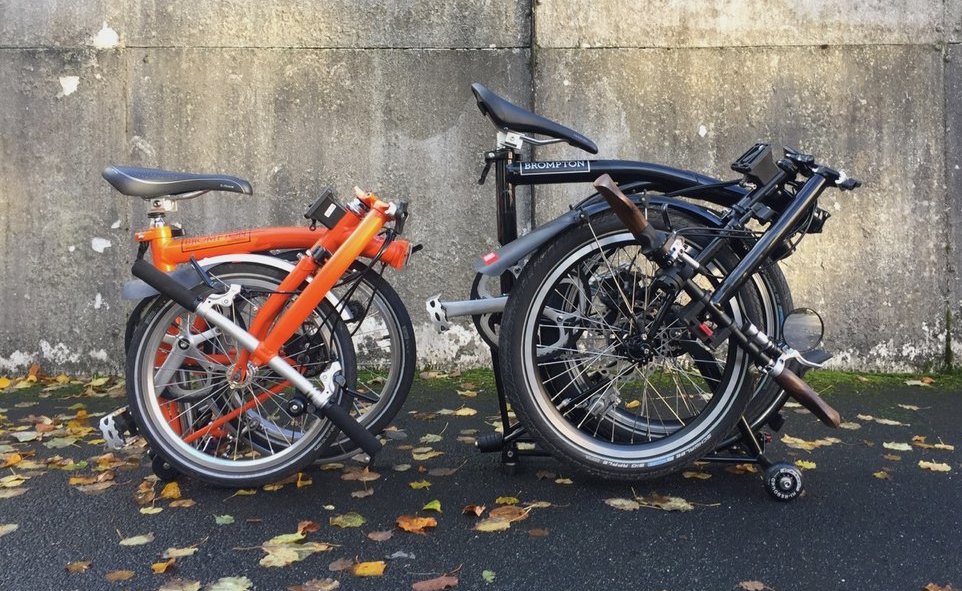
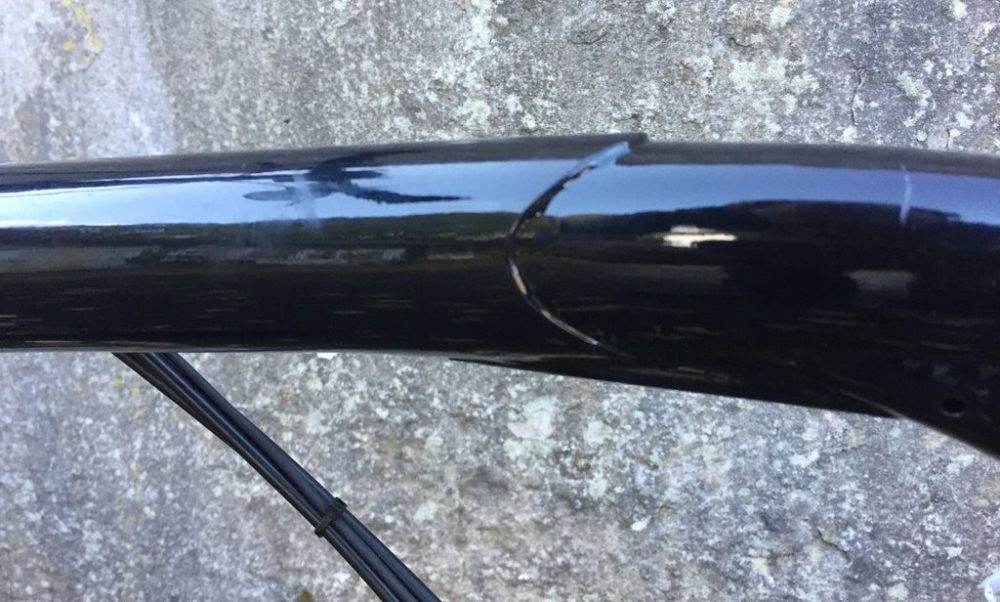
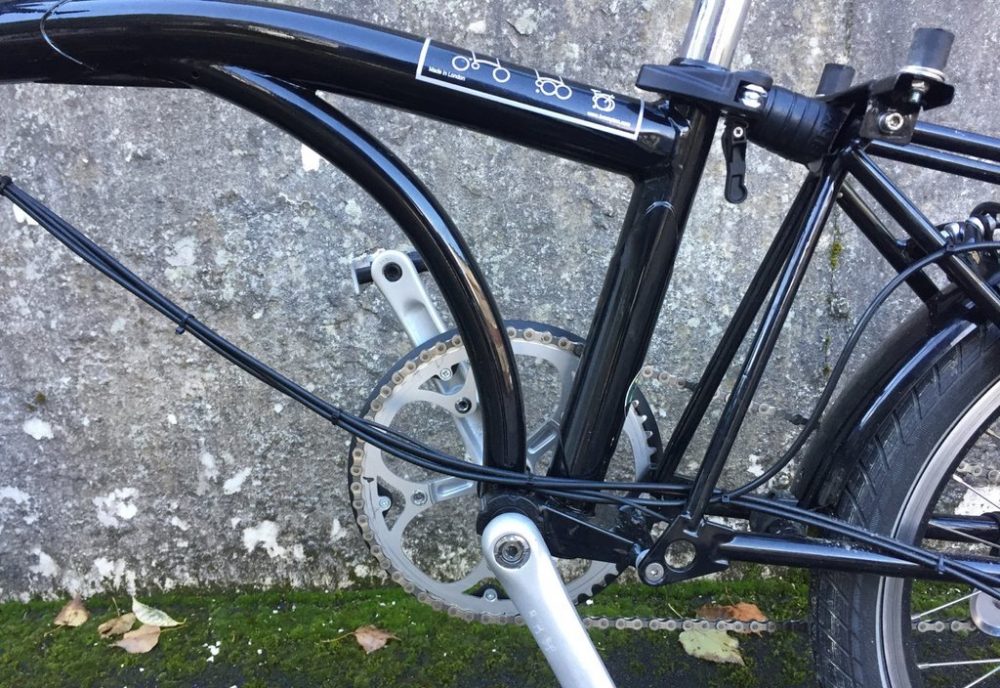
Brompton frames come in only one size whether you’re 150cm/4ft11 or 200cm/6ft6 tall.
While you can get them to fit a taller rider by swapping a few components, best practice bike fitting requires frames to get longer as they get taller. This is not the case with a Brompton, as the distance from the saddle-to-handlebars remains almost the same, no matter the height of a rider.
I might be a bit biased here as a two-metre (6ft6) tall cyclist, but I would love to see a new Brompton that’s scaled up for tall cyclists. Frame modifiers such as Junik-HPV have successfully extended the length of Brompton frames to appropriately accommodate tall customers.
There is no reason why Brompton couldn’t offer an XL frame size. Sure, it’d fold a bit bigger, but you can bet that tall cyclists would take a bigger fold over a cramped riding position.
Summary
Brompton is in a unique position where they can draw experience and design from the extensive knowledge of the Brompton aftermarket. Perhaps, the ultralight titanium Bromptons today would not exist if the product wasn’t created by the aftermarket first?
There is clearly demand for Brompton models that sacrifice folded size for slightly larger wheels. The 20 x 1.1″ wheel spec would be a great option for mile munchers, and the 18 x 2.0″ size would be perfect for those who want to take their bikes on bumpier roads. The frameset to accommodate these wheel sizes could even be the same.
It’d be great to see premium-level internal gear hubs as an option on Bromptons. These drivetrains are reliable and long-lasting and are already available on other folding bikes such as Bike Friday, Tern and Birdy. If Brompton wanted to be a bit different to the rest, the 6, 9, 12 and 18-speed Pinion gearboxes are very much an option they could pursue.
And belt drive would be the perfect drive option for any of these gearboxes.
Do you think Brompton will expand its bike range in the future?

